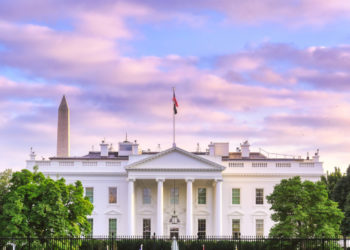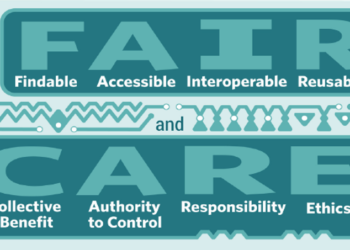As discussed in a post last week, Scholarly Kitchen Chefs Karin Wulf and Rick Anderson submitted a series of questions about the new memo from the White House Office of Science and Technology Policy to Dr. Alondra Nelson, Deputy Assistant to the President and Deputy Director for Science and Society at the OSTP, who was acting as director of that Office at the time the memo was written and promulgated. We are grateful to her for taking the time to respond to those questions during a period when she and her Office were responding to many other issues and requests. Dr. Nelson’s responses are provided below with no edits. Our thoughts regarding these responses (and related issues) will be published in the Kitchen later this week.

Alondra Nelson: I want to thank the “Chefs” for inviting me to engage with your community about the recently released White House Office of Science and Technology (OSTP) Memorandum (2022 Memorandum) on Ensuring Free, Immediate, and Equitable Access to Federally Funded Research, part of the Biden-Harris Administration’s commitment to expanding the American public’s access to the federal research and development ecosystem.
The Scholarly Kitchen (TSK): The new memo frames its directives as “recommendations” (“OSTP recommends that federal agencies, to the extent consistent with applicable law…”). Are these terms really optional? What might happen if an agency or an individual funding recipient chooses not to abide by them?
Dr. Alondra Nelson (AN): As described in Section 3 of the 2022 Memorandum, all federal agencies that conduct or fund research and development should develop new, or update existing, public access plans. This updated public access guidance was developed with the participation and input of multiple federal agencies and departments, and supports progress on a wide-range of Biden-Harris Administration priorities, including open government, open science, research integrity, and evidence-based policymaking. The National Science and Technology Council (NSTC) Subcommittee on Open Science, which is administered by OSTP, and comprised of representatives from across the federal government, is the coordinating body for the public access guidance, and will provide support to agencies and departments throughout the implementation process.
TSK: Does increased openness in science and research pose any risk, or is it all benefit?
AN: There are well-documented benefits to public access. This policy will yield significant benefits on key national priorities for the American people, such as environmental justice, cancer and other biomedical research, understanding communities’ adoption of clean-energy technologies and climate resilience, and the protection of civil liberties in an automated world. Also, importantly, it will make it easier for people across the research ecosystem to work together and forge new solutions and breakthroughs. The Biden-Harris Administration is committed to maintaining an open environment to foster discovery and innovation, and to upholding the joint values of openness and security in research.
TSK: What are the most meaningful – to you and your team – examples of the benefits of accessible scholarship?
AN: A recent vivid example is the COVID-19 pandemic that offered a powerful case study of the benefits of delivering research results and data rapidly to the public. It showed why the insights of new and cutting-edge research stemming from the support of federal agencies should be immediately available — not just in moments of crisis, but in every moment; not only to fight a pandemic, but to advance all areas of knowledge. When research is widely available to other researchers and the public, it can provide policymakers with tools to make critical decisions. Public accessibility is also an important vehicle for government transparency and accountability. In addition, making federally funded research findings accessible in machine-readable formats facilitates use of assistive devices and is inclusive of readers with visual disabilities.
TSK: Do you have concerns about the potential impact of this policy on non-profit scholarly publishers?
AN: In the process of building out this new guidance, OSTP benefited from extensive input from a broad range of stakeholders, including publishers. Since 2021, OSTP’s consultations included input from large and small academic publishers, for-profit and not-for-profit organizations, libraries and universities, scholarly societies, and members of the general public. Moving forward, federal departments and agencies will work with OSTP and the Subcommittee on Open Science to update their public access and data sharing plans by mid-2023; all agencies should have updated public access policies fully implemented by the end of 2025. This timeline gives agencies, researchers, publishers, and scholarly societies flexibility in adapting to the new policies. In addition, OSTP and the coordinating Subcommittee on Open Science, will support the development of processes that can be harmonized across different departments and agencies, as applicable, and can be attentive to the needs of particular research communities.
TSK: In its 2013 guidance, the Obama administration had differentiated between the high dollar agencies and the smaller funding bodies, like NEH. What are the key challenges you see in implementation across these different agencies and disciplines/ constituencies?
AN: Many agencies are well positioned to implement this guidance soon, and others will need more time. The 2022 Memorandum implementation schedule reflects consideration of agencies’ varied timelines and capacities. OSTP and the Subcommittee on Open Science are working with departments and agencies to implement the 2022 Memorandum in a manner that advances their respective missions, while also upholding the importance of public access to federally funded research.
TSK: Does OSTP see the posting of preprints in institutional repositories as an acceptable alternative to un-embargoed public access to fully-published versions?
AN: The new policy guidance for federal agencies is to make peer-reviewed scholarly publications supported by federal dollars publicly accessible by housing either the final peer-reviewed manuscript or the final published journal article in agency-designated repositories that are available to everyone.
TSK: The memo enjoins funding recipients to “establish transparent procedures that ensure scientific and research integrity is maintained in public access policies.” What is it about public access that led OSTP to add this language?
AN: Public access intersects with scientific integrity — a Biden-Harris Administration priority — in important ways, including through transparency about data, conflicts of interest, sources of funding, and replication of findings (if applicable). These practices are critical for research communities’ ability to build on others’ findings – and also supports government’s accountability to the public. This updated public access guidance also requires the use of persistent digital identifiers that can enable greater insight into the research life-cycle, from researchers to awards to results.
Discussion
7 Thoughts on "New Light on the New OSTP Memo: An Interview with Dr. Alondra Nelson"
Did she submit these answers in writing rather than a live interview? She didn’t actually answer any of your questions except the last two (barely) and especially dodged the most difficult ones, the ones we most wanted the answers to, most notably the first about what if a recipient doesn’t comply.
Yes, this was in writing. Rick and I have some follow up thoughts coming later this week!
‘Nature’s first green is gold’ might offer new meaning in the near future, with immediacy and consolidation.
As a US taxpayer, it is hard to argue with making the results of federally funded research accessible to the general public. However, as a journal editor, I believe there are other (better) ways to achieve this aim. Federal agencies could deposit project reports in publicly available, searchable repository. This would make results available as the research progresses. Alternatively (or in addition), Federal funding agencies could require researchers to publish in peer reviewed journals that agree to make the published article publicly accessible for free from the date of publication. Pub Med Central could then link to the published version of record rather than housing the accepted version. This would eliminate version control problems and assure that the work available in a form that meets the desired machine readability/accessibility/tagging (publishers (not researchers or funders) implement these features), is linked to related material (eg editorials), and enables commenting/corrections/retractions. Having multiple versions of the same work in different venues creates problems and also makes accurate tracking of the usage of the work difficult.
Another question: What policies, practices, and funding will evaluate compliance?
Another question: To Dr. Laine’s point, where not all funded research may result in a published paper, what is the most efficient path for transparancy to those data / findings?
The policy guidance specifically calls upon agencies to:
“…develop approaches and timelines for sharing other federally funded scientific data that are not associated with peer-reviewed scholarly publications.”
So the answer to your second question is that this is in the works, but on a longer timeline than public access to data associated with research papers.



